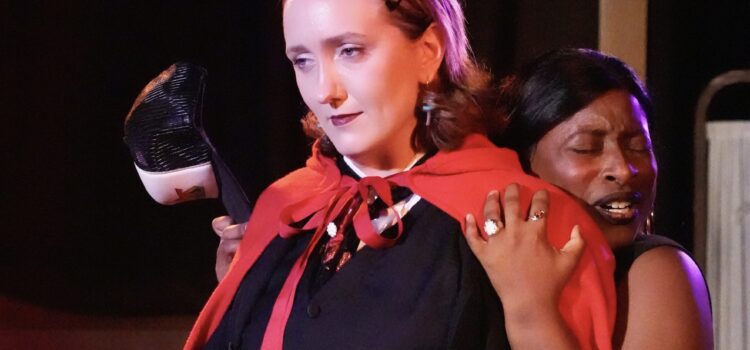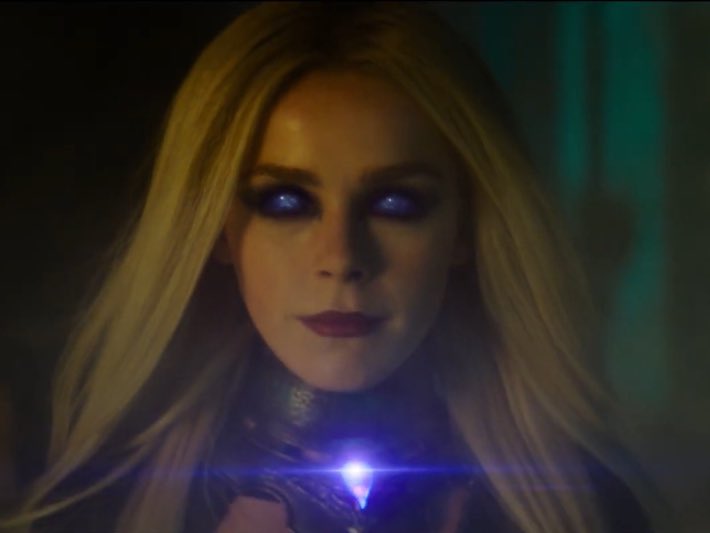Remembering the beautiful soul that was Tim Venhaus, and the joy he brought into our lives as a bright star lighting the darkness. Today, we are remembering his laugh, and how he made us laugh. And how much we loved him, and he loved us. But then again, not a day goes by where we don’t think of him and smile — and also miss him, achingly so. Thanks for the memories. We will never forget the unforgettable you.
By Lynn Venhaus
When Tim was 13, he was excited to show me his latest movie poster that he hung on his bedroom wall, along with his favorites “Pulp Fiction,” “A Clockwork Orange” and “South Park.” Mind you, he was going into the eighth grade.
(I know, I know, but you tell that movie fanatic that he couldn’t watch something because it wasn’t age-appropriate, and he’d find a way to do so, little rebel with a cause that he was.)
It was sometime in the summer of 1998, and he had been shopping at a local mall with his brother and grandmother. He came home with a giant poster of “Reservoir Dogs,” a film by Quentin Tarantino. It took up a lot of space on the wall.
I walked in the door, was working at University of Missouri-St. Louis then, and he shouts: “Mom, mom! Come here!” He pointed to his latest acquisition. He grinned, laughing: “See, it really ties the room together!”
That line is from “The Big Lebowski,” about a rug the Dude had. We had seen the movie that spring and were early champions of how goofy it was. That phrase has been often repeated since then, after the film became a Coen Brothers’ cult classic. Tim became a fan of theirs when he was 11. (Again, no stopping him. And if you knew him, you’d understand).

That phrase is really a great way to describe my late son, Timothy Robert Venhaus, who came into the world around 11 p.m. on a snowy Sunday, Dec. 2, 1984. He would be 40 today. The year he turned 34, he died a week later.
Tim tied every room together that he walked into, because he was the sort of guy who took over that room. He had that affect on people – made people feel better by being in his orbit.
In a way, Jon Bernthal’s character Mikey on “The Bear” reminds me of Tim. He wasn’t as angry, or as tortured, but when Tim was in his element, he had everyone’s attention, and most of the time it was to make people laugh.
Tim loved to make people laugh. He liked to win people over. Truth be told, he projected hip and cool, but he was a big softie. He cried watching “Forrest Gump.” He felt losses deeply — relatives, friends, relationships. I could share many examples of his compassion, really cared for the unseen and the unheard.
That’s why I think he was so good with the young people he taught, at Nature’s Classroom, at Summer Fenn in Concord, Mass., and all those budding filmmakers he came in contact with – and who knows how much effect he could have had at the performing arts school where he was hired to teach an after-school filmmaking class in Chicago (he titled it “Friday Night Lights, Camera, Action!”) once he got back to grad school after the holidays. Well…
They say the best way to remember loved ones you’ve lost is to remember them laughing. So today, and whenever you want to think about Tim, remember his hearty belly laughs, his silly Letterman-type laugh “he-he-he,” his spontaneous giggles, or his exaggerated sarcastic laughs for effect – he had a bunch of different ones.

I miss that laugh ever since his light was extinguished on Dec. 9, 2018. It’s an unfathomable sorrow, the unimaginable. It never gets better, in fact, the hole in the heart just grows wider because we know what we are missing. But in a way, I believe he is watching over his loved ones. Strange sixth sense…it’s a feeling.
How I’d love to hear his laugh again.
Those texts, those calls, those visits home, those random thoughts he’d express, those anecdotes he’d share about his colorful travels, his plans, hopes, dreams and ideas. That holiday break home from DePaul University, where he was making a name for himself in his classes working towards an MFA in Screenwriting, would be his final days, and that’s what we have to cling to — how do you ever know that’s the last hug?
He would come home from his busy seasonal holiday work as a restaurant server – which he picked up at Thanksgiving, so he could make ‘bank’ for the next semester, and he was working many events – and we’d watch awards-season screeners I had for my film organizations voting.
Since 2008, that had been a holiday tradition, the first year I was in St. Louis Film Critics Association (and so was he, for a short time, doing movie reviews weekly on a local radio station). I miss talking about movies every awards season with him. And now that I am in Alliance of Women Film Journalists, Critics Choice Association, and in the tomato-meter on Rotten Tomatoes, we could be having some dandy ‘inside baseball’ discussions.
While unwinding, he’d tell me all about his professors, feedback about his latest screenplay, and so forth. It was such a delight to see him so happy. He felt at home at DePaul, it was a good fit. They had a long break between Thanksgiving and New Year’s because they were on a trimester schedule.
During that time home, he was waiting to learn his grades (A’s, I would find out), and on fire, talking about what classes he was taking the next semester, which started Jan. 5, 2019, and recalling everything he had learned that fall semester, the people he met who made an impact.
The last time he’d walk in the door was Saturday night, Dec. 8, after working a double-shift, announcing he was exhausted, and going to his room because he had to wake up early for the brunch shift. Only he never woke up.

He was finally living his dream. After he passed away, I read his recent journal posts: “Having a good time watching movies with Mom.”
I miss seeing the world through his eyes. He had a view askew, and wasn’t afraid to express it. I found out from his close circle of friends that he was their ‘thought leader’ — he recommended music, movies and TV shows for them. They miss his texts advising them on what to go, see, do.
I miss him calling or texting after he saw a movie, no matter where he was – whether working at Nature’s Classroom in Maine, Massachusetts, Rhode Island, Connecticut or upstate New York teaching filmmaking, the year he lived in New York City with Charlie while doing his college internship at “Sesame Street,” or working here at home in ’17-’18 before grad school – and talking about it “Tim-style.”
I miss many things about his visits home. And knowing that he’ll never make plans to be here at Christmas is hard. Even if he was working elsewhere or at school, he’d be home for the holidays. It was always comforting. Fresh memories were made. Now we don’t have new ones, we have what was. And while they are still fun to remember, it’s farther in the rearview mirror.

The Grief Train
The only thing that we have is precious memories, some of his personal effects, and wonderful people who help us through the void in our lives, that ever-present darkness.
Last year, I wrote a chapter, “You Are Not Alone: Dealing with Grief and Loss,” in a women’s anthology book published by my media colleague and friend Marqueeta Curtis-Haynes, “Ageless Glamour Girls: Reflections on Aging.” All of us 14 contributors – fierce, funny women – shared segments of our lives post-50. (It’s currently available on Amazon — a bestseller! — and soon, we’re working on an audio version).
I’m trying to turn pain into purpose, and if I can help another person through this awful grief journey together, I will be grateful. I’ve had so many family members, friends, colleagues and acquaintances help, that I truly could not have gotten through this without these people raising me up. We can’t do the ‘woulda, coulda, shoulda,” and thinking “What Might Have Been” is fruitless.
I used to kid him because the goal was to be a paid working screenwriter, so if he had to write “Air Bud 6,” then so be it.
Life goes on. His friends are marrying, having children, moving to other cities, trying out new careers and new dreams. I am thrilled to hear from them, and glad they have fond memories of their times spent with Tim. He made an impression on so many people, it makes my heart happy about the lives he touched.

But enough about death. Today, we celebrate his life, one that burned bright for 34 years.
An Unforgettable Person
Forty years ago, he made me a mom. I was three weeks before turning 30, and working at the St. Louis Globe-Democrat as a news reporter. It was a special time. While I dearly love my work, motherhood has been the greatest journey of my life. To see both my sons grow and blossom has been a joy. That can’t ever be extinguished.
When you become a mom, your life changes in such a way that you are never not a mom first. I cherished being the mother of these two boys — I wanted to make sure they had roots and wings. Motherhood has defined more than half of my life. Now I’m in a club no one wants to join. Love to all the moms –there is not a harder, more challenging, more rewarding job in life.
I want to remember how much these two boys put into living. Charlie, now 36, and I move forward, learning a new normal. Tim dearly loved his little brother, they were quite a dynamic duo. Tim was incredibly supportive during Charlie’s cancer battle with a rare aggressive lymphoma in 2013, had been an integral part of his care and recovery.
A few months ago, I finally opened a box of his junior high/ high school stuff – papers, daffy keepsakes, and more ‘Beavis and Butthead’ collectable cards than you ever knew existed. Half-finished scripts involving his friends, funny notes, lists of his favorite songs, movies, TV shows, and more, plus magazines and comic books of that time. Old “Mad” ones, remember “Movieline”?
I found a notebook of essays written in pencil for a senior year English class at Belleville East High School (2002-2003). Apparently, his teacher would give them prompts, such as “character profile of a family member,” “worst Christmas gift,” and “a personal national holiday.”
His teacher wrote on the final page: “Excellent Thought Process! You’re one of a kind, Tim. Keep journaling, your writing is great.”
Here’s a few snippets of his work:
“When I’m 50 years old, it will be the year 2035. I’m pretty sure I’ll have four kids. I’m gonna have all boys because I don’t want to deal with raising girls at all. Their names will be Leroy, Quentin, Spike and Shoe. I’m gonna start having kids at the age of 40. So, the kids will be relatively young so that will keep me young…By this time, I’ll be a producer of movies after getting so much money writing and directing movies. I will have revolutionized Hollywood and made something completely different from the movies of today.”

“My Mom” by Tim Venhaus
Here’s the essay he wrote about me, verbatim.
“My mom is by far the nicest person I have ever known. She’s so nice it makes me mad. But she’s the reason I’m here, obviously. But she is also a contributor to the biggest part of my life. She is the one that got me hooked on movies. From day one, we have been watching movies together.
She is also nutty as squirrel turds. She’s so goofy, it’s ridiculous. She has told me some funny stories about her childhood, like how she fell off a cliff at Camp Ondessonk, and a bunch of other fumbles and uncoordinated accidents.
She’s the best person that I can think of. She talks for hours and hours. You can’t end a conversation with her on the phone. It’s too hard. She always has something to say.
She also has good taste in music. I can ask her who sang what song, and she’ll tell me. But my fondest memories are going to the Tivoli with her and seeing movies like “Fargo” and other great indie movies. But everyone can say that.”

His Version of Heaven
“Heaven would be 72 degrees and it would always be. I think Heaven would be individuals separated for certain likes and dislikes. Like if you like baseball, you’ll go into the Mickey Mantle center of heaven and hang out with players like Babe Ruth.
My personal heaven would be like a mall, but instead of stores they would be filled with bands and movies playing. There would be the recliner section …’’
They were a delight to discover, and to read. It’s like he’s here, but he’s not.
Today, and the rest of this tough, tough month, we celebrate the one and only Tim, and mourn what might have been. That empty chair, empty table at the holidays always reminds us.
In Tim’s honor, do something you have been meaning to try or visit, or make plans to do so. Watch something that will make you smile. Or think. Something genuine – with ‘feels.’.
Even though it’s not currently streaming, and only available as a rental on various platforms, I recommend “About Time,” a warm and heartfelt Richard Curtis film that I suggested Tim watch one wintry night about 10 years ago – he was not inclined, and I convinced him he’d be surprised at how much he’d relate to it. Before I knew it, he was asking me for a box of Kleenexes.

In closing, I want to share an exchange between Bill Murray and Scarlett Johansson in the movie “Lost in Translation.” I re-watched it a few months back, had forgotten how much I liked it (Tim liked it way more). These words really grabbed me – so very true.
Bob: It gets a whole lot more complicated when you have kids.
Charlotte: It’s scary.
Bob: The most terrifying day of your life is the day the first one is born.
Charlotte: Nobody ever tells you that.
Bob: Your life, as you know it… is gone. Never to return. But they learn how to walk, and they learn how to talk… and you want to be with them. And they turn out to be the most delightful people you will ever meet in your life.
Charlotte: That’s nice.

And Tim, because of you, I have been changed for good. And so have many others. (You’ve influenced more people than you realize.) We love you.
Note: Six Degrees of Tim seems to be through music and movies, so we asked everyone in his orbit to contribute songs to a Tim Venhaus 40th Birthday Mixtape that is now curated on Spotify by his brother, Charlie Venhaus. It’s so Tim, perfectly perfect waltz down memory lane.







Lynn (Zipfel) Venhaus has had a continuous byline in St. Louis metro region publications since 1978. She writes features and news for Belleville News-Democrat and contributes to St. Louis magazine and other publications.
She is a Rotten Tomatoes-approved film critic, currently reviews films for Webster-Kirkwood Times and KTRS Radio, covers entertainment for PopLifeSTL.com and co-hosts podcast PopLifeSTL.com…Presents.
She is a member of Critics Choice Association, where she serves on the women’s and marketing committees; Alliance of Women Film Journalists; and on the board of the St. Louis Film Critics Association. She is a founding and board member of the St. Louis Theater Circle.
She is retired from teaching journalism/media as an adjunct college instructor.





















































